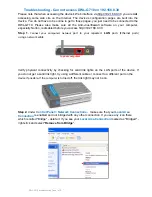
7
CHAPTER2 PROFIBUS Unit
2-2
PROFIBUS system concept
In order to understand how the controller and sequencer (PLC) operate on the PROFIBUS
system, let’s first take a look at how the system communicates.
Each unit connected in the PROFIBUS system is classified by function into a master
station and a slave station. The master station determines data communication and is
equivalent to a master PLC (sequencer) unit. The slave station is controlled by the master
station and processes data in response to a request from the maser station.
The controllers equipped with the PROFIBUS unit operate as slave stations and ex-
change I/O information with the master station.
Master Station
Master station determines data communication.
Slave Station
Slave Station
This station is controlled
in the PROFIBUS system
by the master station.
This station is controlled
in the PROFIBUS system
by the master station.
Controllers
+
PROFIBUS unit
These function as slave stations.
q
w
q
The controller on/off information is sent to the master station via the information
network (PROFIBUS system cable). Moreover, the response from the controller
against the message (remote command) is also similarly sent to the master station
via the network.
w
Master station sequencer (PLC) on/off information is sent to the controller via the
information network (PROFIBUS system cable). Moreover, the message (remote
command) from the master station is also similarly sent to the master station via
the network.
* The controller monitors the on/off information and message (remote command) at
10 millisecond intervals.
M E M O
M E M O
Station address is set from the HPB. Communication speed is automatically selected.
ON/OFF information handled by the PROFIBUS unit comes through 32 general-pur-
pose I/O pins and 16 Dedicated I/O pins.
ON/OFF information in the robot program is handled by DO statements, WAIT state-
ments, and JMPB statements. (Serial input/outputs (I/O) for the PROFIBUS are assigned
using I/O numbers from 200 onwards.) Designated I/O ports can be controlled indepen-
dently of the program by making emulated serialization settings on the parallel I/O.














































